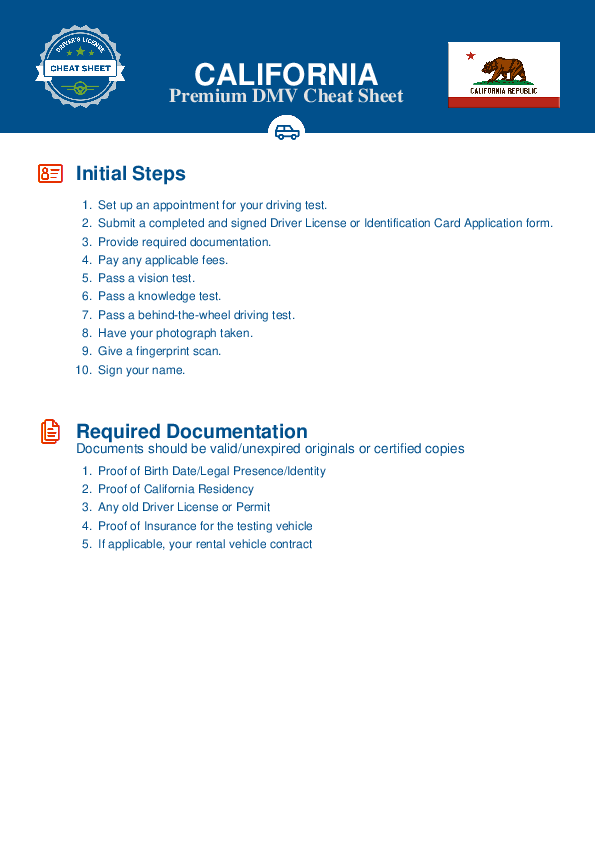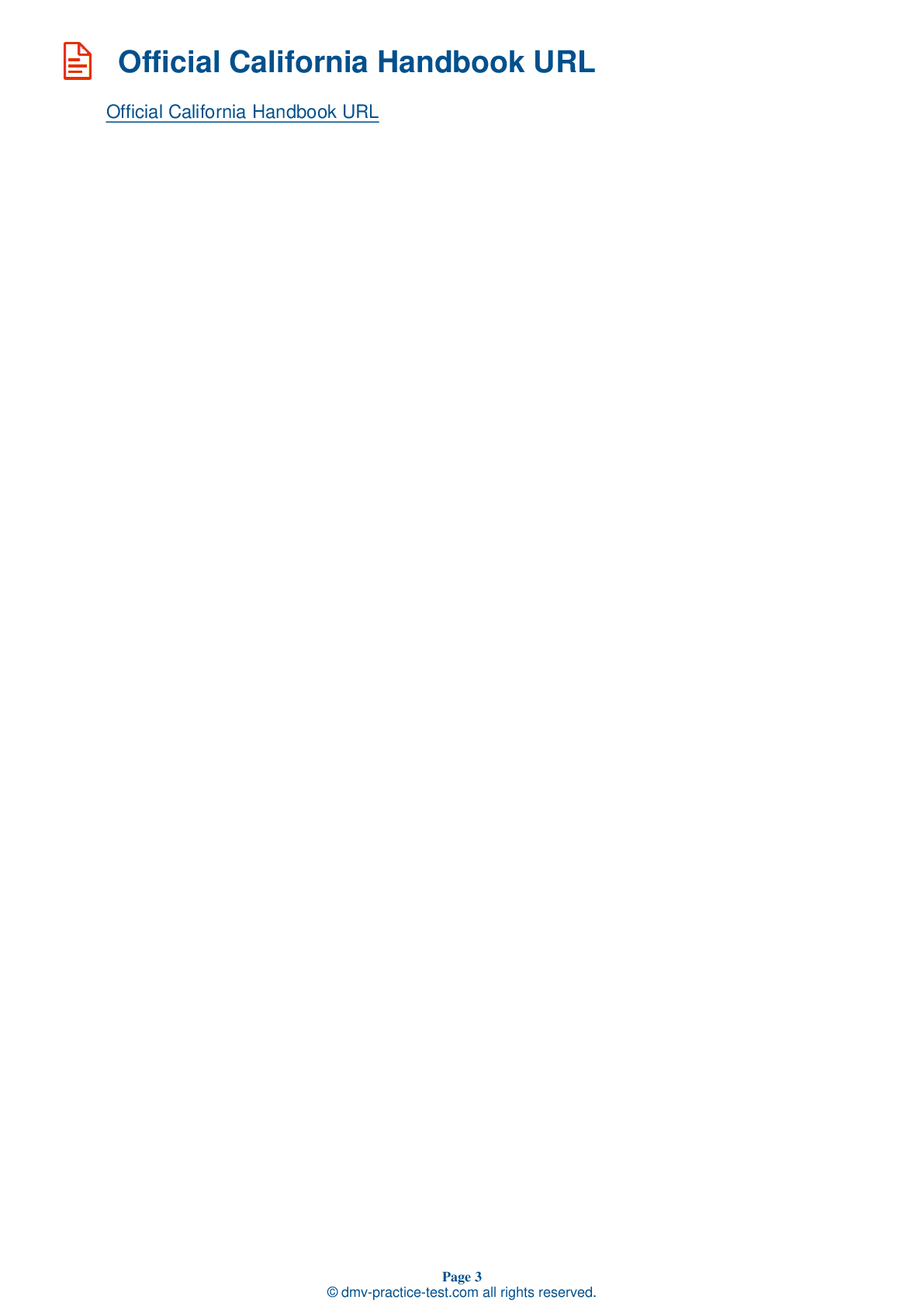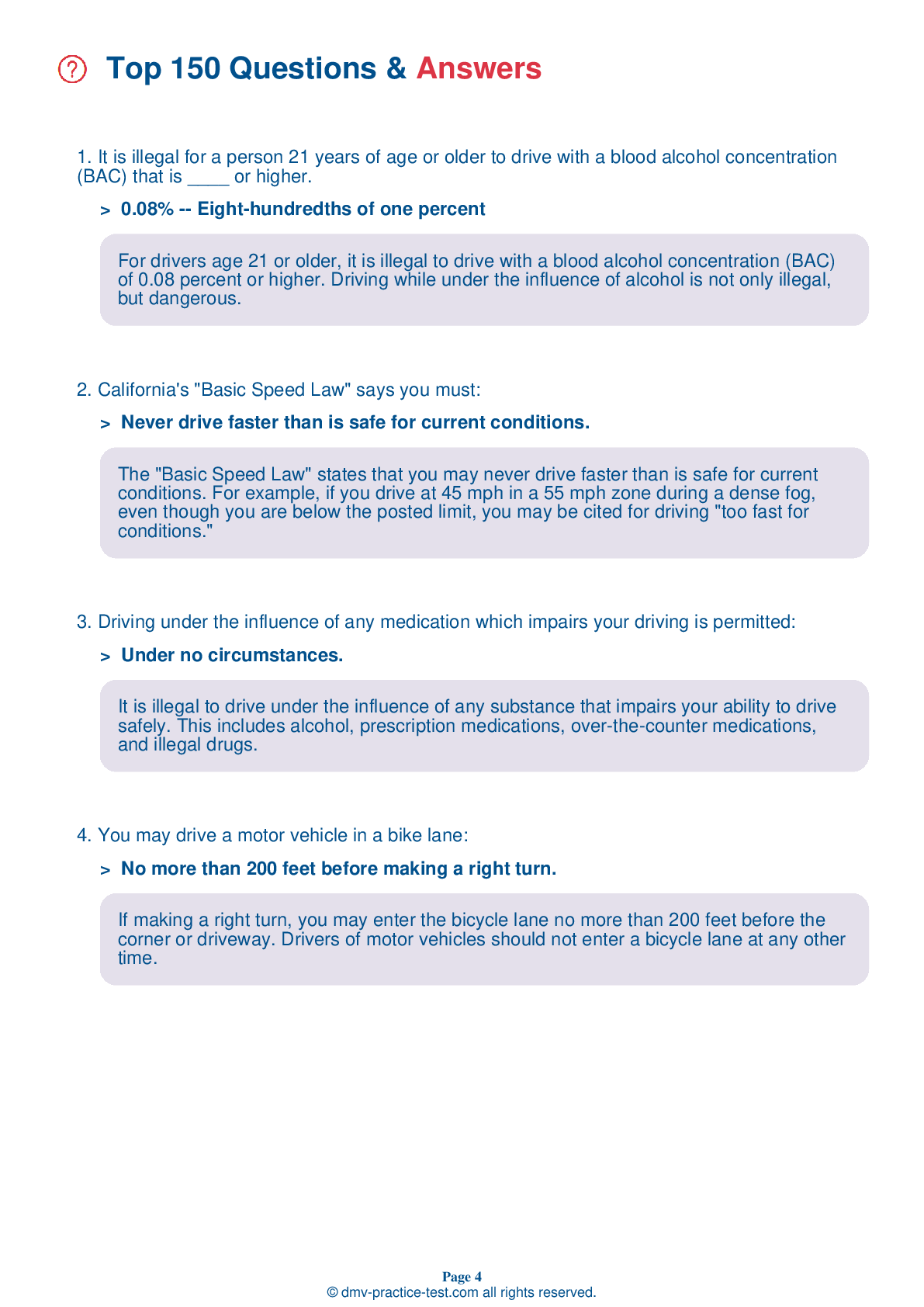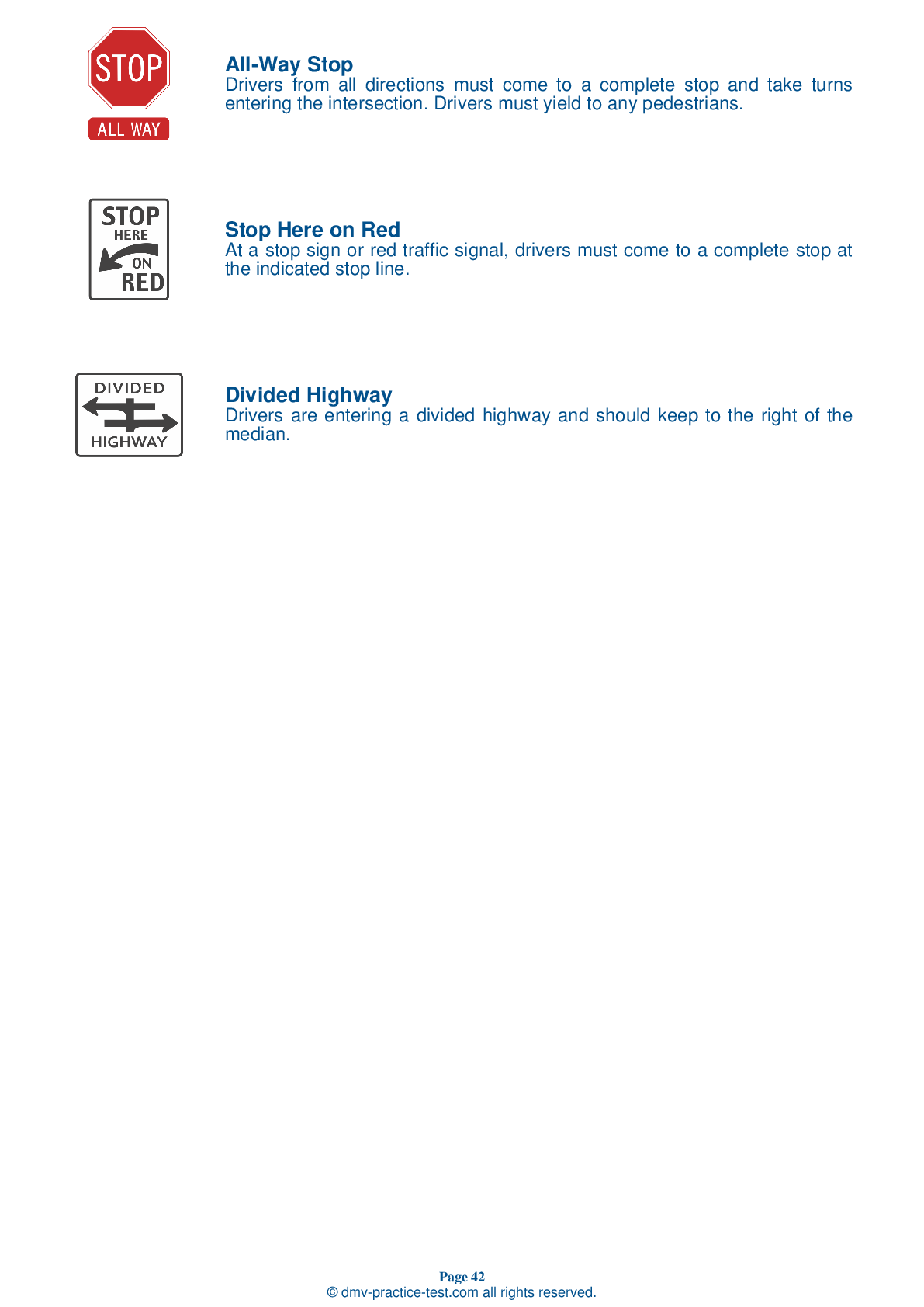FREE California DMV Practice Test #5 Page 7 of 6
This California DMV practice test includes 36 of the most vital road signs and rules questions taken directly from the official California Driver Handbook for 2025. Use genuine questions that are very similar (often identical!) to the DMV driving permit practice test and driver's license exam to prepare for the DMV driving permit test and driver's license exam.
To help you recall the topics, each ca dmv practice test question includes a hint and explanation. The written component of the official DMV test will consist of questions about regulations of the road, traffic signs, and driving statutes, as well as information from the Driver Handbook.
To get the required 83 percent passing score to be allowed to pass, you must correctly answer 38 out of 46 questions (or 30 out of 36 if you are over 18). Use this DMV practice exam to help you prepare for your California instruction permit or driver's license.
How does it work?
California residents using any form of testing help during the test will result in an automatic failure, and the DMV may take further action against your driving permit, so please don't cheat.
Ideally suited for:
- California Driver’s License
- Driver's Learner Permit in California
- CA Refresher Test for Senior Citizens CA
- CA Driver’s License Renewal
What to expect on the CA DMV exam:
- 36 questions
- To pass, you must have 30 accurate answers.
- a passing grade of 83%
- The minimum age to apply;15 ½
37 . When may you legally drive around or under a railroad crossing gate?
Do not go around or under any lowered gate at a railroad crossing. Once the gate is raised, do not proceed across the tracks until you can see clearly in both directions and are sure there are no trains coming.
38 . Which of the following driving skills is/are affected by the use of alcohol and/or drugs?
Alcohol and other drugs can negatively effect a number of skills needed for safe driving, including a driver's reaction time, coordination, alertness, and ability to concentrate.
39 . This sign means:
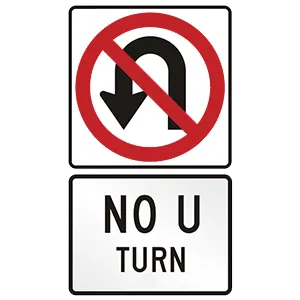
This sign indicates that you may not make a U-turn. You cannot turn around to go in the opposite direction at an intersection where this sign is posted.
40 . This yellow sign means:

Some warning signs have a fluorescent yellow-green background. These signs warn of upcoming conditions, including roads with curves and sharp turns.
41 . Interstate driving requires drivers to:
Safe use of the interstate demands drivers be constantly alert and capable of driving at high speeds.
42 . Which of the following describes the thinking of defensive drivers?
Driving defensively means anticipating potential errors made by others and preparing to compensate for their mistakes.
43 . Drivers turning left must yield to:
Drivers turning left must yield to oncoming vehicles that are driving straight ahead. A turning driver may only proceed when they can safely turn without affecting oncoming traffic.
44 . This road sign means:
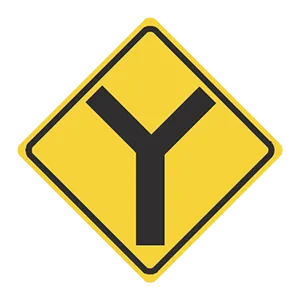
Warning signs are usually yellow with black markings. This sign warns drivers that they are arriving upon a fork in the road and they must bear either right or left.
45 . If you come to an intersection and your view to the side is blocked, you should:
Drivers must slow down when approaching an intersection. If a clear view of cross traffic is obscured, a driver should come to a stop and inch forward until they can see clearly in both directions.
46 . Which of these statements is true about changing lanes?
Before changing lanes, signal, look in all your mirrors, and look over your left or right shoulder to make sure the lane next to you is clear. Looking over your shoulder is a way to check your blind spot to be sure there is no vehicle, motorcycle, or bicycle traffic in the next lane.
Need Car Insurance? No problem!
Compare the best rates in California and find a personalized policy that meets your needs.
1. Are You Currently insured ?
2. Married ?
3. Do you own your Home?
4. Do you have more than 1 car ?
5. Have you or a Family Member Honorably Served in U.S. Military ?
6. Your Name
7. Age
8. Zip code
IMPORTANT REMINDER:Auto Insurance is Mandatory to drive in California. Get covered before you hit the road to avoid any fines.
Ranked by best match
